The Intel NUC8i7HVK (Hades Canyon) Review: Kaby Lake-G Benchmarked
by Ganesh T S on March 29, 2018 1:00 PM ESTGaming Notebooks Compared
One of the most common comments posted in response to mini-PC reviews is that the value proposition of an equivalent notebook is much higher than that of the PC. While there are plenty of factors that might make this comparison invalid, we thought it would be interesting to see how the NUC8i7HVK fares against premium gaming notebooks. Towards this, we borrowed a few benchmarks from our notebook reviews and processed them on the NUC. In the graphs below, we also have the gaming mini-PCs on which the benchmarks were processed. First, we will look at some artificial benchmarks before moving on to the games themselves.
3DMark Revisited
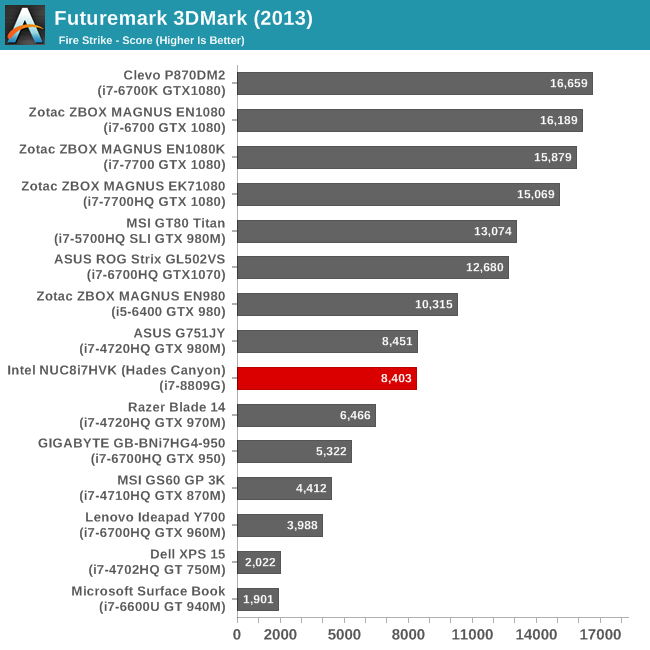
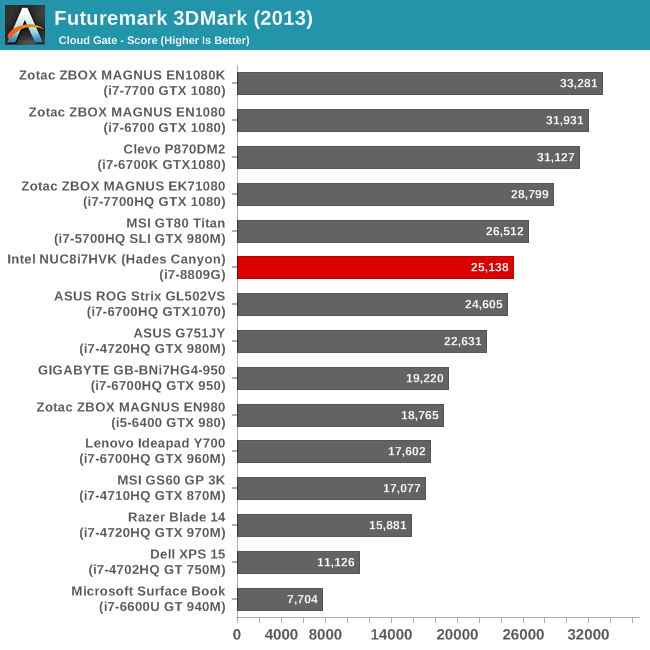
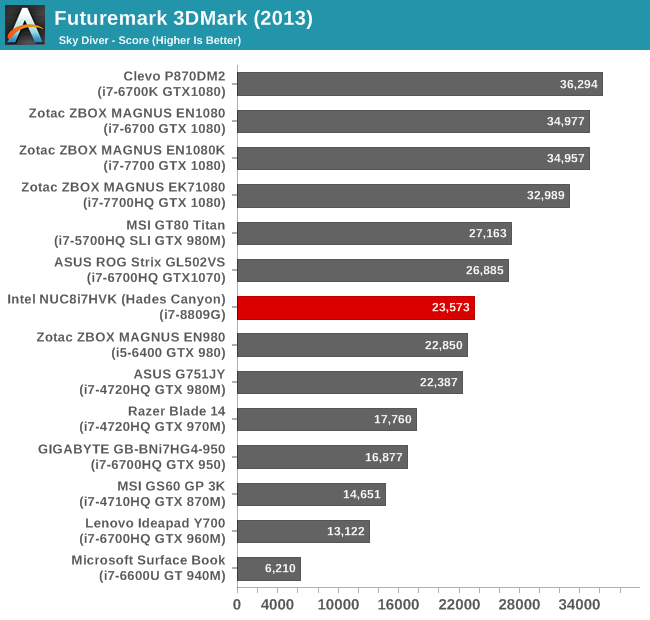

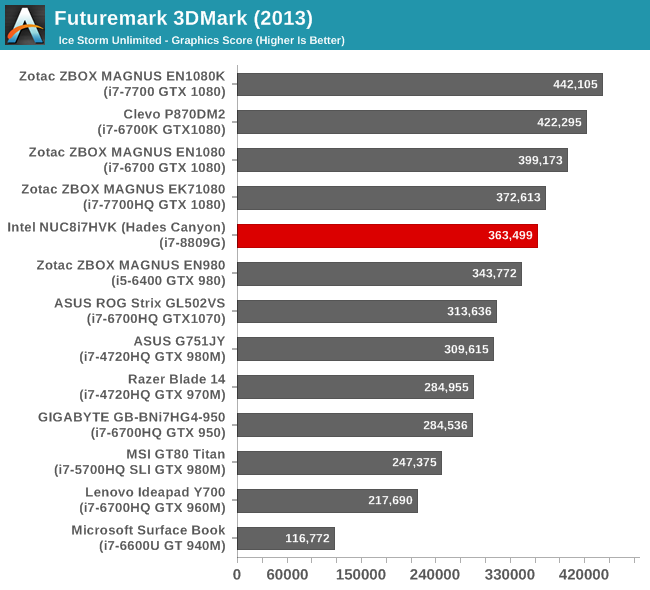

GFXBench
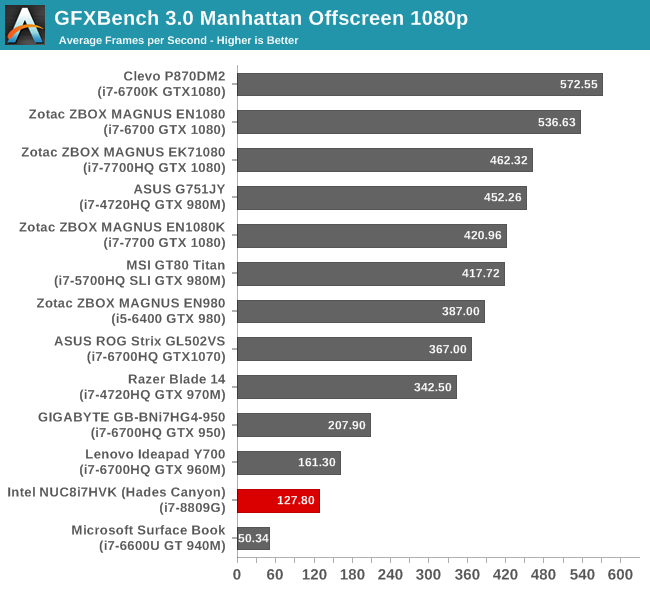
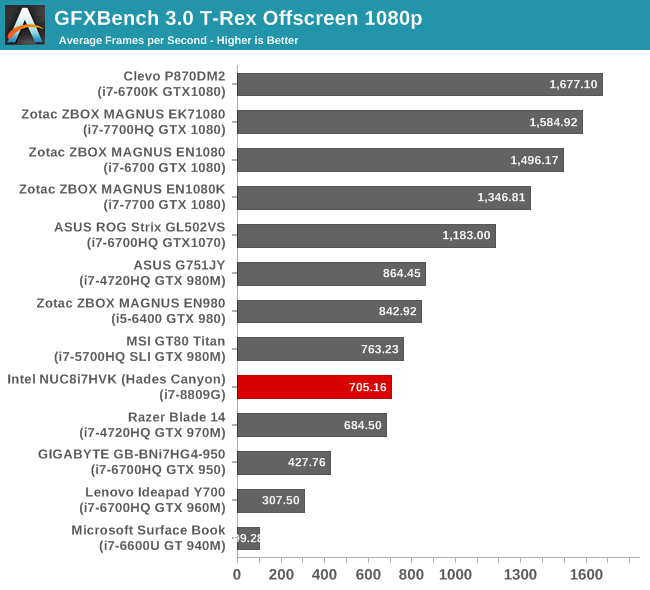
Dota 2

Middle Earth: Shadow of Mordor
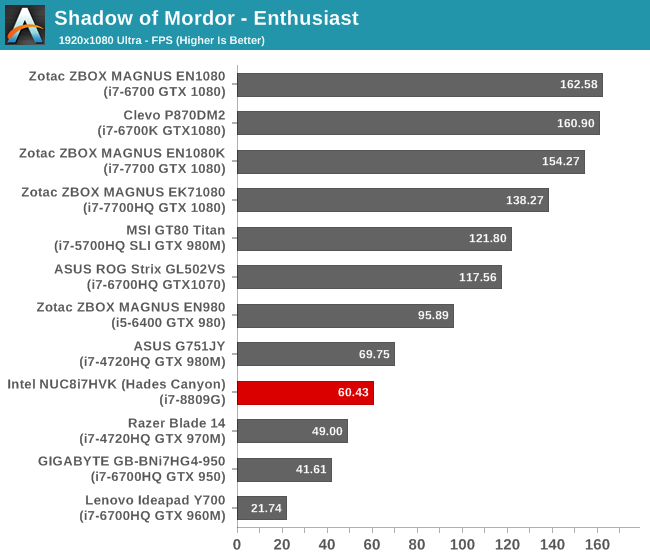
The takeaway from these results is that the performance of the Radeon RX Vega M GH roughly slots around GTX 970M. There are some benchmarks such as Dota 2 that are more sensitive to the CPU power, and in those cases, we find that the NUC8i7HVK actually comes in far ahead of other gaming notebooks that use processors with TDPs of 45W or lower.










124 Comments
View All Comments
Samus - Saturday, March 31, 2018 - link
Seriously, this is essentially an iGPU. 4K? Be reasonable. It’s actually quite amazing how powerful this is to be able to match a GTX 970 at 1080p and surpass a 980 at lower resolutions.Can’t wait to see these in light gaming notebooks. No reason you couldn’t power the system with a 130w PSU, meaning USB-C powered.
nathanddrews - Monday, April 2, 2018 - link
I had to re-re-read the graphs to comprehend that this IGP is faster than my 3570K/GTX 970 setup. You pay for it, though...WinterCharm - Monday, April 2, 2018 - link
To be fair, this is not a traditional IGP. This is a Radeon Vega chip with 24 CUs, 1536 shader units, and 64 ROP's connected to 4GB of HBM2. It's attached to the Intel CPU via 8 PCIE lanes over an interposer, and is two chips + HBM assembled into one unit.Fallen Kell - Friday, April 6, 2018 - link
Except you are simply much better off just getting an Xbox One X or PS4 Pro at half the price...iter - Thursday, March 29, 2018 - link
Hey, at least it unlocks performance with a locked CPU ;)Crazyeyeskillah - Thursday, March 29, 2018 - link
This is barely passable at 1080p. For older titles in early dx11 and lower it will be fine, but this isn't a modern gaming box by any stretch of the imagination. I bet it would be close to on par with an original ps4 performance.Drumsticks - Thursday, March 29, 2018 - link
That's pretty objectively false. In most benchmarks, it is, as the review mentions, slotting between a GTX 960 and GTX 980. Realistically, it's somewhere in the realm of a GTX 970 or a bit less which puts it, again, in the realm of the GTX 1050 Ti to RX 470. Both of those would be significantly more powerful than the PS4 Original.Even from a mathematical perspective, 24CUs at up to 1190 MHz vs 18 CUs at 800MHz is pretty self explanatory.
Cooe - Friday, March 30, 2018 - link
Are you kidding? This obliterates a base model PS4. It falls behind a GTX 1060 Max Q.Samus - Saturday, March 31, 2018 - link
Last I checked the PS4 non-Pro has a GPU on par with a 750Ti. This thing is on par with a GTX970. That’s twice as powerful as a 750Ti.HStewart - Friday, March 30, 2018 - link
Keep in mind - in truth the Kaby Lake G is actually intended for a mobile CPU - in that arena - it very good. Especially that it also intended to be in ultra portable market.